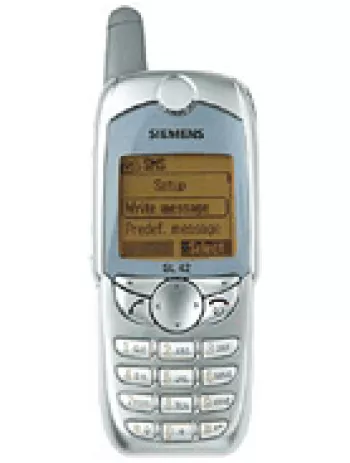
Overview of the Siemens SL75
The Siemens SL75 was a mobile phone released in the second quarter of 2005, characterized by its slider design and its stylish look for that era. As a feature phone, it represented a blend of technology and aesthetics, aiming primarily at a younger demographic interested in a fashionable and functional device.
Design and Build
Measuring 92 x 48 x 23 mm and weighing 99 grams, the Siemens SL75 was relatively compact and lightweight, making it a convenient choice for users who wanted a pocket-friendly device. The phone featured a slider mechanism, which was a trendy design element during the mid-2000s, allowing users to slide the phone open to reveal the keypad. The SL75 was available in three colors: Pure Silver, Polar White, and Onyx Black, each providing a sleek and sophisticated appearance.
Display
The SL75 came with a TFT display that supported 256K colors. The resolution of the screen was 132 x 176 pixels, giving it a 4:3 aspect ratio. Although the display size was not specified, the resolution at the time was adequate for viewing basic images and using standard phone functions.
Camera Capabilities
The Siemens SL75 was equipped with a single 1.3 MP main camera, accompanied by an LED flash. This allowed for basic photography and video recording, suitable for capturing spontaneous moments. However, there was no front-facing camera, which was typical for phones from this era.
Memory and Storage
The phone had an internal storage capacity of 52MB, a modest amount by today's standards but fairly typical for feature phones of its time. It did not have a card slot for expandable memory. The phonebook could store up to 1000 contacts across 23 fields with photo call capability, a feature that provided users ample space to store their essential contacts.
Connectivity Options
The Siemens SL75 supported GSM networks on 900, 1800, and 1900 MHz bands, ensuring decent connectivity options for users globally. It included GPRS Class 10 for data transmission and EDGE technology, allowing users to browse the internet using the WAP 2.0/xHTML browser.
For short-range connectivity, Bluetooth 1.2 was included, which was standard for sharing files between devices at that time. The device, however, did not include WLAN or GPS, and it lacked a radio. The proprietary USB interface was used for charging and data transfer.
Sound and Audio Features
The phone did not feature a loudspeaker or a standard 3.5mm headphone jack, which limited its utility as a music device considerably. For alerts, it supported vibration, as well as downloadable polyphonic, MP3, and AAC ringtones, which added a degree of customization for users.
Battery Life
The Siemens SL75 housed a removable Li-Ion 700 mAh battery. This battery provided a standby time of up to 300 hours and a talk time of up to 5 hours, offering reasonable longevity between charges for typical usage patterns during that time period.
Software and Features
Positioned as a feature phone, the Siemens SL75 included support for Java MIDP 2.0 applications, enabling users to download and utilize Java-based apps and games, such as SeaBattle, Wappo 2, and Golf, with the option to download additional games. Messaging capabilities encompassed SMS, MMS, Email, and Instant Messaging, catering to a range of communication preferences.
Conclusion
During its time, the Siemens SL75 represented a balance of design and functionality, appealing to customers looking for a stylish slider phone with essential connectivity and multimedia features. Despite its limitations by modern standards, such as lack of smartphone capabilities and advanced networking options, it served its purpose effectively as a communication and entertainment device in the mid-2000s.
Key Features of Siemens SL75
- GSM Technology with 2G bands (GSM 900/1800/1900)
- Compact dimensions: 92 x 48 x 23 mm and light weight at 99 g
- TFT display with 256K colors
- 1.3 MP main camera with LED flash
- Internal memory of 52MB with a phonebook capacity of 1000 contacts
- GPRS Class 10 and EDGE support
- Bluetooth 1.2 for wireless connectivity
- Messaging options: SMS, MMS, Email, and Instant Messaging
- Standard removable Li-Ion 700 mAh battery providing up to 300 hours standby
- Available in three colors: Pure Silver, Polar White, Onyx Black
Disadvantages of Siemens SL75
- No 3G, 4G, or 5G network support - limited to 2G GSM technology only.
- Lacks expandable memory slot (No card slot) - limited to 52MB internal storage only.
- No front selfie camera available.
- No loudspeaker - limits audio output options.
- No standard 3.5mm headphone jack for audio.
- No WLAN (Wi-Fi) capability.
- No built-in GPS positioning.
- No FM radio feature.
- Uses proprietary USB connection - not standard.
























View Also
More Phones
All Rights Reserved +14266 Phones © Mobilawy 2025

























